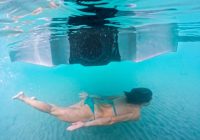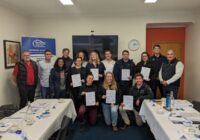A lasting relationship framed by quality, service and delivering on expectation.
It can take a very long time to become an overnight success. Alfab have been working at their craft and evolving to meet the needs of their customers for 70 years. Indeed 2024 is Alfab’s 70th birthday, and a milestone that is witness to their ability to adapt to the changing requirements of boat manufacturing and aesthetics. Since Maritimo’s inception 20 years ago, Alfab has been developing and delivering products that offer the very best of design, function and longevity that is demanded for Maritimo’s range of world class motor yachts.
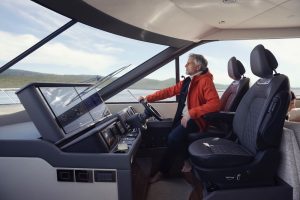
Alfab’s relationship with Bill Barry-Cotter started way before Maritimo; back in the mid 60’s when Bill was producing boats under the Mariner brand. Styling was a lot different back then, design outcomes were the result of more limitations in materials and construction techniques. Glass areas were smaller, flat and squarer edged. Portholes were just that, small holes through the hull, more heavily framed, and end users were different too, far less concerned about construction style and the visible fixings to hold it all together.
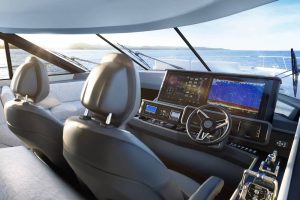
Today’s modern yachts are way more complex and through advancements in materials and construction, styling has evolved to more free-flowing forms and now windscreens and side glass are integral to the overall aesthetic. Expectations are for much larger panoramic screen areas and portholes that carve away significant areas of the hull, all contained within slimline frames, with hidden fixings, that follow complex surface forms… all having to perform and endure the rigours of some of the planet’s harshest conditions. Simple, right?
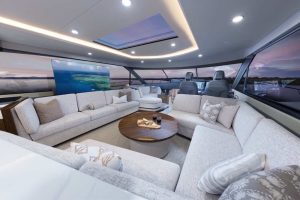
A recent chat with the owners and management team behind Alfab, Ryan and Reece Maddison, the grandsons of the founder of Alfab, shone some light on the evolution that has taken place over these seven decades.
“What it took in plant and machinery to produce a window for a Mariner all those years ago was quite different to what it takes to produce effectively the same window that goes into a M75 today – back then it was a drop saw, a welder and an assembler,” Ryan stated.
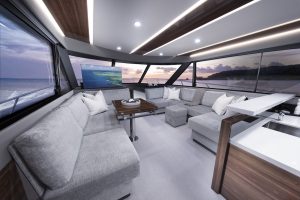
“Now we take a CAD file of the vessel and convert it into our language, to be able to create the digital file to produce accurate tooling that’s going to meet the Quality Control requirements of the finished, curved glass product.”
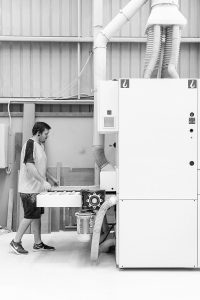
“From there it’s all processes like stretch bending, CNC cutting and CNC routing to form and fabricate the framework. The workmanship that goes into it in the pre-production with 3D CAD, to production, testing, QC and then out the door for assembly in the vessel, is totally different to what it used to be. We also employ 3D printed components to confirm tolerances equal to the thickness of a hair, for the alignment of the frame or the section that’s sewn together,” Reece went on to say.
“Everything is meticulous. Expectation only moved forward, it’s more prevalent today than ever been before with the quality of glass and the quality of frames, because it is that final finesse that people are looking at, even from a distance. Every single piece of glass that goes into a Maritimo is quality controlled to several aspects. Not only for its visual or aesthetics, but also for its shape and size and details of that panel.”
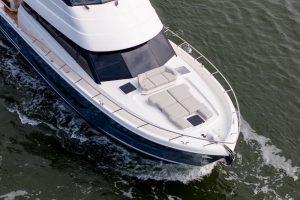
“With the advancement of composites including carbon and kevlar, which Maritimo use in strategic areas. Structural strength is being achieved in the vessels that wasn’t available before. Strength reduces those window mullion widths to allow for larger windows and larger hull glass. To offer window and Door solutions. we have to factor in integrity of the structure, the lay-up system and we then spend a lot of time developing the type of supporting structures that needs to be incorporated, for example so we reduce the opportunity of a sawing effect when the boat is moving. This is why we not only supply the windows, but we offer the whole system as well.”
The challenges, for example, then become how to design and construct a 100 plus kilo glass panel hanging at a negative angle on the side of the hull, with no visible fixtures,” added Ryan.
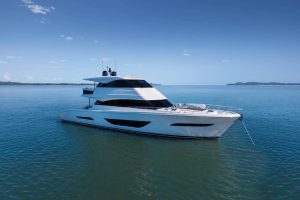
“Even for the sliding systems, whether it be electric or manual, just the way the glass moves is a big part of the final feel of the boat. There’s more emphasis on our product than ever before. It’s one thing to make them function for static operation but the clearances can become a problem with the vessel in motion.
“Since the new 75’s have come online, we have supplied multiple variances in mullion type, depending on its location and requirements. These days it needs to be functional and importantly, simplistic in appearance. And there is complexity in creating a solution that looks simple, and also very elegant,” Reece offered.
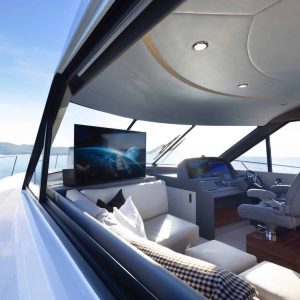
“And obviously the different materials that we use also comes into play. Materials and finishes that’ll stand up to the rigours of what the boat’s exposed to environmentally and being a user touch point. So, finishes like ceramic based paints may be employed, for finish and longevity, over the top of proven base materials and coatings.”
“We treat everything that we produce like it’s a piece of jewellery and describe it as such. That’s the level of detail that’s required to further enhance what is a beautiful final yacht,” said Reece.
“To see our product as part of a world class Australian made offering, competing on a global platform, is very special. We’ve been privileged to see Maritimo displaying at the Miami Boat Show and the Fort Lauderdale Show,” he added.
“It’s great to see Maritimo continually pushing into other markets, and desired around the world, we couldn’t be prouder, being a small family business in Southeast Queensland, that contributed to that process.”
To find out more about Alfab products click here.






